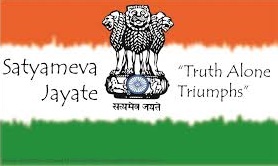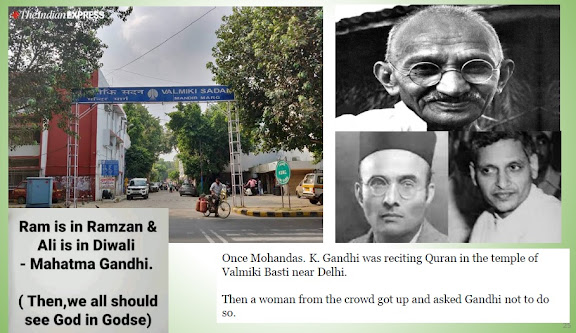MODI’S DEMONETIZATION - IS IT A TRAGEDY OR THE REMEDY?
The renowned Newspaper - The Hindu - had published two articles about
Modi’s Demonetization - one arguing as a Tragedy and another refuting as a
Remedy. The article “Making a mammoth tragedy” is by Dr.Manmohan Singh, while
the other article “Not a tragedy, but the remedy” is by S. Gurumurthy.
Dr.Manmohan Singh, former Prime Minister, had, in his article
titled “Making a mammoth tragedy” in the Hindu, argued giving his points of
views of which the main points are herein brought out in a nutshell and the
entire article can be viewed by clicking the link here: LINK
· Money is an idea that inspires confidence and
Modi by his demonetization announcement at the stroke of the midnight hour on
November 9, 2016 has destroyed the confidence of more than a billion Indians. Modi’s
intentions - to stop circulation of fake currencies and to break the grip of
corruption and black money - are honourable and deserve to be supported
whole-heartedly. But his good intentions have paved the way to the road to
hell.
·
Modi seems to have acted on the false notion
that ‘all cash is black money and all black money in cash.’ This is far from
reality. How is being explained here: 90% workforce earn their wages in cash
and in the absence of adequate banking support, they had suffered and are still
suffering and to tarnish their hard earned money as ‘black money’ and throw the
lives of these hundreds of millions of poor people in disarray is a mammoth
tragedy. Modi whose fundamental duty as the head of an elected government is to
protect the rights and livelihood of its citizens had failed in this
fundamental duty by this demonetization.
· Black money - wealth that has been accumulated over
years - will not necessarily be in cash but in the forms of land, gold, foreign
exchange etc.. Various attempts by many governments in the past decades to
recover this illicit wealth - through actions by the Income Tax department, the
Enforcement Directorate and schemes such as voluntary disclosure etc. were
targeted strikes at only those suspected segments of society and not on all
citizens. And Modi’s introduction of Rs.2000 new currency has actually made it
easier to generate such unaccounted wealth in the future.
·
Long queues to encash their own money and their disappointments
in not getting the new currencies for exchange of old currencies bring to my
mind long lines for rationed food during war time. I never imagined that one
day I would find my own countrymen and women waiting endlessly for rationed
money. That is all due to Modi’s hasty decision.
·
The macroeconomic impact of this decision is
likely to be hazardous. It is indeed true that India’s cash to GDP ratio is
very high vis-à-vis other nations. But this is also an indicator of the Indian
economy’s dependence on cash.
·
The scars of an overnight depletion of the
honest wealth of a vast majority of Indians combined with their ordeal of
rationed access to new currency will be too deep to heel quickly. This can have
ripple effects on GDP growth and job creation.
Manmohan Singh and even Congress had at the initial days of
demonetization welcomed the move and then afterwards only they had made a
U-Turn terming the Demonetization itself as a tragedy.
Singh’s statement that black
economy is not in ‘Cash’ may be partly true, but, as a lay man, the underlying
factor in such black economy is only Cash received un-receipted, unbilled and unbanked
and then going into black wealth such as land, gold, foreign exchange,
participatory paper etc. To tackle black
money - black wealth etc., Singh thinks that only Raid Raj is the solution
something similar to previous Licence Raj of Congress Rule which was buried deep
by the Liberalisation Policy of P.V.Narasimha Rao in whose period Singh was
instrumental to bring the change as his Finance Minister.
Singh’s arguments boiled down to this: People had suffered and
hence it is a mammoth tragedy. Unfortunately, he had not substantiated his
argument with supportive economic data to prove his points.
Now let us know what S. Gurumurthy says to refute the Singh’s
arguments against Modi’s Demonetization.
S. Gurumurthy, in his article titled “Not a tragedy, but the
remedy”, had compared the Vajpayee’s Government’s performance and 10 years
Manmohan Singh’s UPA rule in respect of various parameters and had concluded
that “far from doing a monumental misappropriation or making a mammoth tragedy,
Mr. Modi is correcting the monumental mismanagement of the economy by the
economist Dr. Singh.” A few salient
points only are jotted down here and for the entire article, please click - LINK
- “To know the answer - whether demonetisation is a tragedy or a remedy. Is it a monumental mismanagement of the economy as Dr. Singh charges? Or is it a remedy for the accumulated filth as Prime Minister Narendra Modi claims?” - The story of the Indian economy from 1999 to 2004 under the NDA and from 2004 to 2014 under the United Progressive Alliance (UPA) needs to be recalled.
- NDA Rule (1999 - 2004): GDP growth: 27.8%, annually 5.5. % points. Annual money supply: 15.3%. Prices: 23%, annually 4.6%. Asset prices: rose only moderately in those 5 years. Stocks: 32% Gold: 38%. The NDA also turned in a surplus of $20 billion in 2002-04 in the external sector, after decades of unending deficits, save in two years in the late 1970s.
- UPA Rule - first best 6 years (Before Scam periods) - (2004 - 2010): GDP:50.8%, annually 8.4 % - 1 ½ times NDA’s. But this high growth story had yielded just 27 lacs jobs against 600 lacs jobs during NDA’s 5 years. In spite of UPA achieving 1 ½ times NDA’s GDP growth, UPA’s job growth is a poor 5% and hence Singh’s bemoaning that Modi’s demonetization will stifle jobs is farce.
- UPA prices rose by 6.5% (4.6% under NDA). External sector Deficit: $100 billion ($ 20 billion surplus).
- UPA’s high growth jobless phenomenon is due to huge asset price inflation - not production - passed off as high growth. Stock and gold prices, property prices were touched peaks. The asset inflation was not the result but the cause of the UPA’s high growth and Modern economics deducts the non-asset price inflation from nominal growth to know the real growth. But it sees asset price rise as wealth and prosperity and adds it to GDP. See how this economics worked for the UPA.
- During UPA, Rs.500/1000 was unmonitored. Average Money supply grew annually 18% as against 15.3% in NDA. High Denomination Notes in 2004 was 34% of GDP but, the same was at a level of 79% in 2010 which was further increased to 87% in November 2016. The average annual rise in High Denomination Notes was 51% between 2004 and 2010 and the annual rise was 63% by 2013-14. Further, the RBI noted that 2/3 of the 1000 notes and 1/3 of the 500 notes - totaling around Rs.6 lac crore - never returned to banks after they were issued. The unmonitored High Denomination Notes roaming outside banks were the reasons for the gold and land prices by black cash apart from Participatory Notes which rose from Rs.68,000 crore in 2004 to 3.81 lac crore in 2007.
- Such large High Denomination Notes in large volume being unaccounted in circulation had landed the Indian Economy in a Catch-22 situation by Dr.Singh leaving no option to Modi but to demonetize the high value currencies to bring back the economy to a healthy state, though the step is a bitter pill - Kadak Chai - Short Term Pains for Long Term Gains.
Let the readers decide who is speaking the truth. Perhaps
Dr.Singh was forced to wear the political garb under duress from his erstwhile
High Command - more from Yuvaraj who had torn ‘paper approved and passed by
Dr.Singh in public’ while Prime Minister Dr.Singh was in air travelling towards
Delhi than from Madam 10 Janpath.
THINK INDIA THINK!






Comments